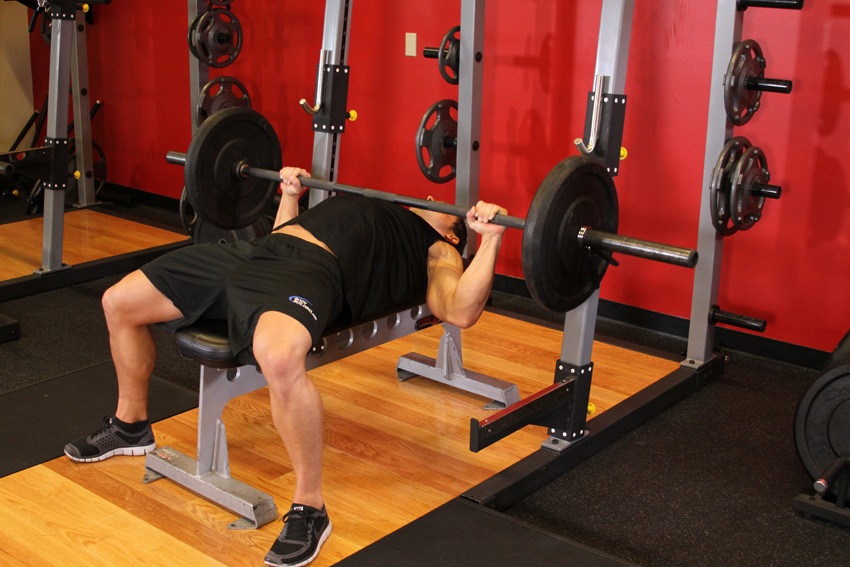5 tips to increasing your bench press
05/31/2016 / By usafeaturesmedia

(MensFitnessFocus.com) Ever watch one of those huge NFL linemen during the annual combine rep out about 30 bench presses at 225 pounds over the course of 30 seconds? Ever wanted to do that?
Okay, maybe not, but as guys many of us are always looking for ways to max our bench press. Let’s face it – we’re envious of the guy in the gym who can put three 45s on each side and do reps of 6-8, then add weight after that.
And while there are a lot of “tips” out there for how to boost your bench, one thing is certain: It ain’t going to happen overnight. Get that into your head and that’s your first step towards max bench success. Guys that are repping 300-plus on the bench didn’t just show up one day and decide to do it; they worked up to that weight and so you must as well. And there are correct (and incorrect) ways to do that; you don’t simply pile on more and more weight, although that is certainly part of the equation.
Okay, so let’s get started.
- Tuck those elbows. A lot of guys who bench have horrible form and that is one reason why they can’t achieve the max they’re looking for.First things first, then: Tuck in those elbows. Most people bench with flared elbows, which then causes them to bring the bar down high on the chest. This also requires a great amount of shoulder rotation, and this is how you get hurt (especially as you put more weight on the bar). By rotating your elbows in so they are at a 45-degree angle to your body reduces shoulder rotation, allowing you to lower the bar to just below your nipples, and decreases overall range of motion.
- Decrease your range of motion. There are other ways to accomplish this besides just changing your elbow angle. Retracting your shoulder blades can also make a big difference – with overall stability and range of motion.When you set up on the bench, pull your shoulder blades together like you do when you do a seated row; this gives your shoulder blades maximum contact with the bench pad, which also increases stability. And it pulls your arms back, which decreases range of motion. Keep your blades retracted even when you’re pulling the bar off the rack, so you don’t lose your initial position (which you’ll never get back throughout the lift).Arching your back is another way to decrease range of motion, and this does not have to be exaggerated. Make sure your glutes don’t come off the bench when you lift.
- Get a little faster. Lifting more weight requires generating more force, so you should add some dynamic benching into your workouts to practice developing force.When you begin pressing the weight up from the bottom of your bench press you need to drive as much force into your upper back as possible. This is just body physics; the more force you can drive into the bench, the more force that can be transferred into the bar.If done properly a bench press is really a full-body movement; you need to use leg drive, as well, when you’re powering up the bar. Think of benching as a controlled shove; those huge NFL linemen use that same motion to fire off the ball into their opponent.
- Remain tight. Do this by holding your air, first and foremost. Many people will advise you to breath during sets and that’s okay when you’re doing bench for high reps and muscle-building, but you’re training on the bench as a movement and you want to lift maximum poundage, that won’t do. If you let out your air during your max attempt you will lose all your stability and the ability to push the weight.Also, grip the bar as tightly as you can; that seems obvious, but many guys don’t. Do this for better control of the bar.
- Triceps. Here is another fact: With small, weak triceps you’re never going to improve your benching max. Tri’s are the most important muscle group for the bench press. Use partial movements to overload the lockout, and also train your triceps separately, to increase size and mass. The bigger your tri’s the more muscle you can “recruit” to max your bench.The majority of your benching power comes from the area around the elbow, so concentrate your tri-training on that area.And remember your nutrition as well. To get bigger you have to eat to get bigger. Legend Arnold Schwarzenegger’s rule of thumb was a gram of protein for every pound you weigh. That might work for you or it might not (consult a fitness trainer or primary healthcare provider for advice!) but it is certainly true that your intake has to match your output; muscles don’t grow well without protein and nutrition.
More:
- The Awesomeness Of Burpees Will Condition You Like No Other Exercise
- Put Your Fat Loss On Hyperdrive With This Intense Interval Training Regimen
- After Your Workout, Don’t Forget To Fuel Up
MensFitnessFocus.com is part of the USA Features Media network. Check out ALL our daily headlines here.
Tagged Under: bench press, muscle mass, weight gain





















